Can gallstones cause weight gain. Gallbladder Diseases and Obesity: Exploring the Complex Connection
How does excess body weight contribute to gallstone formation. What role does central adiposity play in gallbladder disease risk. Can metabolic abnormalities increase susceptibility to gallstones. How do obesity and gallbladder dysfunction interact. What are the implications of this relationship for public health.
The Link Between Excess Body Weight and Gallstone Disease
Gallstone disease is a common digestive disorder that affects millions of people worldwide. Research has consistently shown a strong association between excess body weight and an increased risk of developing gallstones. But what exactly is the nature of this relationship?
Obesity, particularly abdominal obesity, appears to be a significant risk factor for gallstone formation. A study by Stender et al. used Mendelian randomization to demonstrate that elevated body mass index (BMI) is likely a causal risk factor for symptomatic gallstone disease. This suggests that the link between obesity and gallstones is not merely correlational, but that excess weight may directly contribute to stone formation.

Central Adiposity and Gallbladder Disease
Central adiposity, or the accumulation of fat around the midsection, seems to be particularly problematic when it comes to gallbladder health. Research by Haffner et al. and Tsai et al. has shown that central adiposity is associated with an increased risk of gallbladder disease and cholecystectomy (surgical removal of the gallbladder) in both men and women.
- Abdominal fat may alter bile composition, making it more likely to form stones
- Visceral fat can affect hormones and inflammation, potentially impacting gallbladder function
- Central obesity is often associated with insulin resistance, which may play a role in gallstone formation
Metabolic Abnormalities and Gallstone Risk
Beyond simple excess weight, metabolic abnormalities associated with obesity appear to further increase the risk of gallstone disease. Su et al. found a strong association between metabolically-abnormal obesity and gallstone disease, particularly in adults under 50 years old.

How do metabolic factors contribute to gallstone formation? Several mechanisms have been proposed:
- Insulin resistance may impair gallbladder motility
- Alterations in cholesterol metabolism can affect bile composition
- Chronic low-grade inflammation associated with metabolic syndrome may impact gallbladder function
The Role of Genetics in Gallstone Susceptibility
While obesity and metabolic factors play a significant role, it’s important to note that genetic predisposition also contributes to gallstone risk. Katsika et al. conducted a study of over 43,000 twin pairs, finding that both genetic and environmental factors influence symptomatic gallstone disease.
Lammert and Sauerbruch reviewed the genetic epidemiology of gallstones, highlighting several genes that may be involved in stone formation. Understanding these genetic factors could help identify individuals at higher risk and potentially lead to targeted prevention strategies.
Obesity-Related Changes in Bile Composition
One of the key mechanisms by which obesity may promote gallstone formation is through alterations in bile composition. Freeman et al. analyzed gallbladder bile in individuals with morbid obesity and found significant differences compared to non-obese individuals.
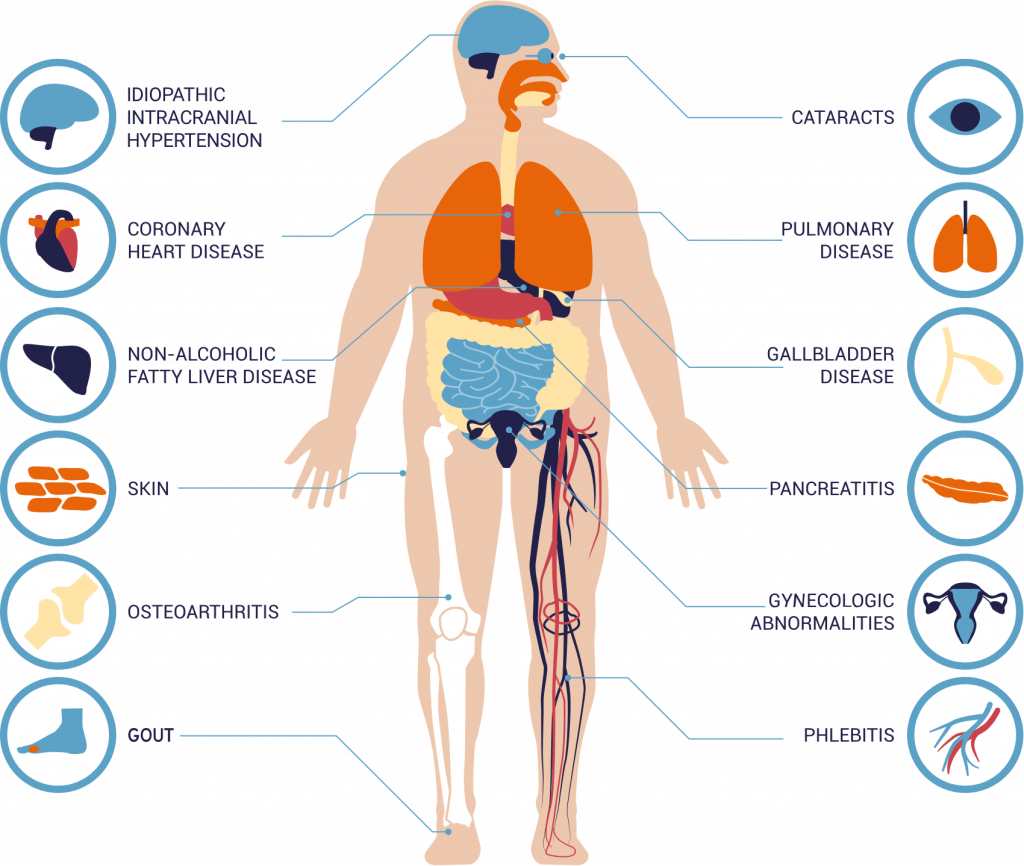
In obese individuals, bile tends to be more saturated with cholesterol, making it more likely to form crystals that can eventually develop into gallstones. Additionally, obesity may affect the balance of bile acids and phospholipids, further increasing the likelihood of stone formation.
Supersaturation and Nucleation
The process of gallstone formation involves two key steps: supersaturation of bile with cholesterol and nucleation of cholesterol crystals. Obesity appears to promote both of these processes:
- Increased cholesterol synthesis and secretion into bile
- Reduced bile acid synthesis, altering the cholesterol-to-bile acid ratio
- Changes in gallbladder motility that may promote crystal formation
Gallbladder Motility and Obesity
Obesity doesn’t just affect bile composition; it also impacts gallbladder function. Nakeeb et al. demonstrated that insulin resistance, commonly associated with obesity, can cause gallbladder dysmotility. This impaired gallbladder emptying may contribute to the formation of gallstones by allowing bile to stagnate and crystals to form.
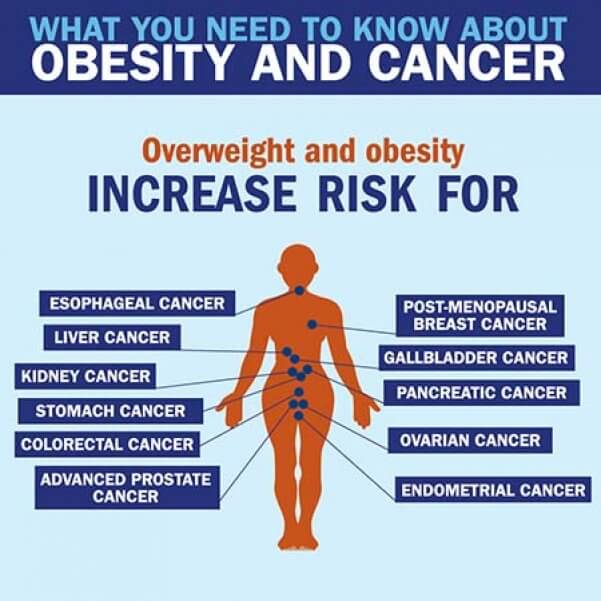
How does obesity affect gallbladder motility? Several factors may be involved:
- Hormonal changes associated with excess adipose tissue
- Alterations in autonomic nervous system function
- Direct mechanical effects of abdominal fat on gallbladder contraction
Weight Loss and Gallstone Risk: A Paradoxical Relationship
Interestingly, while obesity increases the risk of gallstones, rapid weight loss can also promote stone formation. This paradoxical relationship highlights the complex interplay between body weight and gallbladder health.
During rapid weight loss, such as that seen after bariatric surgery or very low-calorie diets, several factors can increase gallstone risk:
- Increased mobilization of cholesterol from fat stores
- Reduced gallbladder contractions due to low-fat diets
- Changes in bile acid metabolism
This underscores the importance of gradual, sustainable weight loss approaches for individuals at risk of gallstone disease.
Implications for Public Health and Prevention
The strong link between obesity and gallstone disease has significant implications for public health. As obesity rates continue to rise globally, we may see a corresponding increase in gallbladder-related health issues.

What can be done to address this growing concern? Several strategies may be effective:
- Promoting healthy weight maintenance through diet and exercise
- Screening for gallstone risk factors in obese individuals
- Developing targeted interventions for those at highest risk
- Educating the public about the link between obesity and gallbladder health
The Role of Diet in Gallstone Prevention
While weight management is crucial, specific dietary factors may also influence gallstone risk. Maclure et al. found that certain dietary patterns were associated with a lower risk of symptomatic gallstones in middle-aged women. These findings suggest that dietary interventions could play a role in gallstone prevention, particularly for those at increased risk due to obesity or other factors.
Future Directions in Research and Treatment
As our understanding of the relationship between obesity and gallbladder disease continues to evolve, several areas warrant further investigation:
- Identifying specific genetic markers that interact with obesity to increase gallstone risk
- Developing targeted therapies to address obesity-related changes in bile composition and gallbladder function
- Exploring the potential of pharmacological interventions to prevent gallstone formation in high-risk individuals
- Investigating the long-term outcomes of weight loss interventions on gallbladder health
Lammert et al. provide an comprehensive overview of current knowledge and future directions in gallstone research, highlighting the need for continued study in this important area of gastroenterology.

The Global Burden of Gallstone Disease
Gallstone disease represents a significant health burden worldwide. Everhart and Ruhl examined the burden of digestive diseases in the United States, finding that gallbladder and biliary diseases contribute substantially to healthcare costs and morbidity.
How does the prevalence of gallstone disease vary globally? Several factors influence regional differences:
- Dietary patterns and lifestyle factors
- Genetic predisposition in certain populations
- Access to healthcare and diagnostic technologies
- Obesity rates and prevalence of metabolic syndrome
Understanding these global patterns can help inform public health strategies and resource allocation for gallstone prevention and treatment.
Evolving Treatment Approaches
As our understanding of the relationship between obesity and gallstone disease grows, treatment approaches continue to evolve. Portincasa et al. reviewed the past, present, and future of gallstone therapy, highlighting the shift towards minimally invasive procedures and the potential for novel pharmacological interventions.

Current treatment options for gallstone disease include:
- Laparoscopic cholecystectomy (surgical removal of the gallbladder)
- Dissolution therapy using bile acids
- Extracorporeal shock wave lithotripsy for select cases
- Lifestyle modifications and weight management
Future treatments may target the underlying metabolic and molecular mechanisms that link obesity to gallstone formation, potentially offering more personalized and effective interventions.
Challenges in Diagnosing Gallstone Disease in Obese Patients
Diagnosing gallstone disease in obese individuals can present unique challenges. Excess abdominal fat may make it more difficult to visualize the gallbladder using conventional ultrasound techniques. Additionally, obesity-related comorbidities can complicate the clinical picture, making it harder to attribute symptoms specifically to gallstones.
How can healthcare providers improve gallstone diagnosis in obese patients? Several strategies may be helpful:
- Utilizing advanced imaging techniques such as endoscopic ultrasound or magnetic resonance cholangiopancreatography (MRCP)
- Considering gallstone disease in the differential diagnosis for obese patients with abdominal pain or other relevant symptoms
- Implementing screening protocols for high-risk individuals
- Educating patients about the symptoms of gallstone disease and the importance of prompt medical attention
The Role of Biomarkers
Emerging research is exploring the potential of biomarkers to aid in the diagnosis and risk assessment of gallstone disease, particularly in obese individuals. These biomarkers could potentially provide valuable information about an individual’s likelihood of developing gallstones or help identify those with asymptomatic stones who may benefit from preventive interventions.

Obesity, Gallstones, and Cancer Risk
The relationship between obesity, gallstones, and cancer risk is an area of growing concern. Some studies have suggested that individuals with a history of gallstones may have an increased risk of certain cancers, particularly gallbladder cancer. Given the strong association between obesity and gallstone formation, this raises important questions about the potential long-term consequences of obesity-related gallbladder disease.
What factors might contribute to this increased cancer risk? Several mechanisms have been proposed:
- Chronic inflammation associated with gallstones
- Changes in bile composition and flow
- Shared risk factors between obesity, gallstones, and certain cancers
- Potential genetic susceptibilities
Further research is needed to fully elucidate these relationships and develop appropriate screening and prevention strategies for high-risk individuals.
The Economic Impact of Obesity-Related Gallstone Disease
The increasing prevalence of obesity and its associated gallbladder complications has significant economic implications. Healthcare costs related to gallstone disease, including diagnostic procedures, medical management, and surgical interventions, represent a substantial burden on healthcare systems worldwide.

How can we address the economic impact of obesity-related gallstone disease? Several approaches may be beneficial:
- Investing in prevention strategies to reduce obesity rates and promote gallbladder health
- Implementing cost-effective screening programs for high-risk populations
- Developing more efficient diagnostic and treatment protocols
- Exploring innovative therapies that could reduce the need for costly surgical interventions
By addressing the root causes of obesity-related gallstone disease, we may be able to significantly reduce its economic burden while improving patient outcomes.
The Role of Health Policy
Health policy plays a crucial role in addressing the intersection of obesity and gallbladder disease. Policymakers face the challenge of balancing prevention efforts, access to care, and resource allocation in a complex healthcare landscape. Evidence-based policies that promote healthy lifestyles, improve access to obesity treatment, and support research into gallstone prevention and management could have far-reaching benefits for public health.
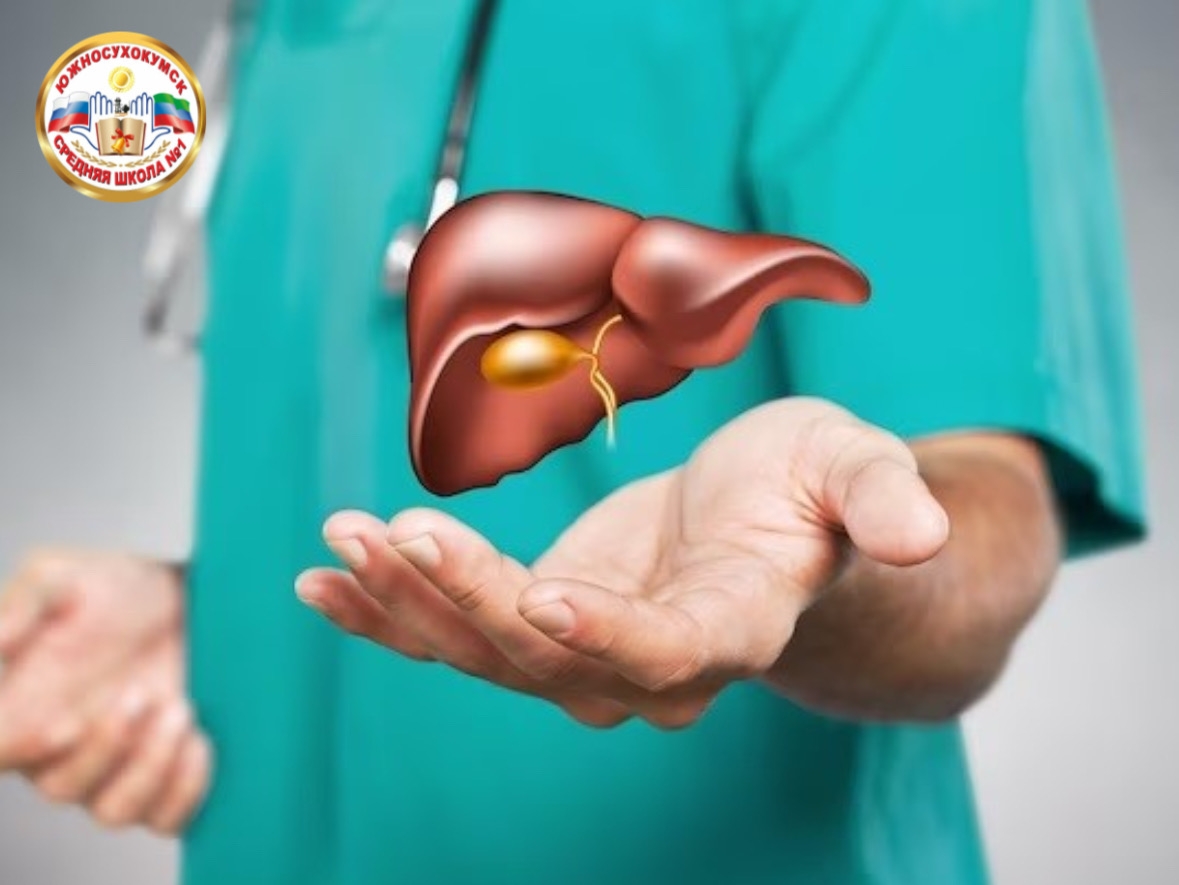
Pediatric Obesity and Gallstone Risk
As childhood obesity rates continue to rise, there is growing concern about the impact on pediatric gallbladder health. Di Ciaula et al. investigated gallbladder and gastric motility in obese newborns, pre-adolescents, and adults, highlighting the potential for early-onset gallbladder dysfunction in obese children.
What are the implications of pediatric obesity for gallstone risk? Several factors warrant consideration:
- Early metabolic changes that may predispose to gallstone formation
- Potential for longer duration of exposure to risk factors
- Challenges in diagnosing and managing gallstone disease in children
- Long-term health consequences of childhood-onset gallbladder issues
Addressing pediatric obesity and its impact on gallbladder health represents a critical area for intervention and further research.
Prevention Strategies for At-Risk Youth
Developing effective prevention strategies for children at risk of obesity-related gallbladder disease is essential. These may include:

- School-based programs promoting healthy eating and physical activity
- Family-centered interventions addressing lifestyle factors
- Early screening and monitoring of at-risk children
- Education about the long-term health consequences of obesity
By focusing on prevention in youth, we may be able to significantly reduce the burden of gallstone disease in future generations.
Excess Body Weight and Gallstone Disease
1. Everhart JE, Ruhl CE. Burden of digestive diseases in the United States Part III: Liver, biliary tract, and pancreas. Gastroenterology. 2009 Apr;136((4)):1134–44. [PubMed] [Google Scholar]
2. Portincasa P, Ciaula AD, Bonfrate L, Wang DQ. Therapy of gallstone disease: what it was, what it is, what it will be. World J Gastrointest Pharmacol Ther. 2012 Apr;3((2)):7–20. [PMC free article] [PubMed] [Google Scholar]
3. Attili AF, De Santis A, Capri R, Repice AM, Maselli S, Group G, The GREPCO Group The natural history of gallstones: the GREPCO experience. Hepatology. 1995 Mar;21((3)):655–60. [PubMed] [Google Scholar]
4. Schafmayer C, Hartleb J, Tepel J, Albers S, Freitag S, Völzke H, et al. Predictors of gallstone composition in 1025 symptomatic gallstones from Northern Germany. BMC Gastroenterol. 2006 Nov;6((1)):36. [PMC free article] [PubMed] [Google Scholar]
5. Katsika D, Grjibovski A, Einarsson C, Lammert F, Lichtenstein P, Marschall HU. Genetic and environmental influences on symptomatic gallstone disease: a Swedish study of 43,141 twin pairs. Hepatology. 2005 May;41((5)):1138–43. [PubMed] [Google Scholar]
Genetic and environmental influences on symptomatic gallstone disease: a Swedish study of 43,141 twin pairs. Hepatology. 2005 May;41((5)):1138–43. [PubMed] [Google Scholar]
6. Lammert F, Sauerbruch T. Mechanisms of disease: the genetic epidemiology of gallbladder stones. Nat Clin Pract Gastroenterol Hepatol. 2005 Sep;2((9)):423–33. [PubMed] [Google Scholar]
7. Lammert F, Gurusamy K, Ko CW, Miquel JF, Méndez-Sánchez N, Portincasa P, et al. Gallstones. Nat Rev Dis Primers. 2016 Apr;2((1)):16024. [PubMed] [Google Scholar]
8. Stender S, Nordestgaard BG, Tybjaerg-Hansen A. Elevated body mass index as a causal risk factor for symptomatic gallstone disease: a Mendelian randomization study. Hepatology. 2013 Dec;58((6)):2133–41. [PubMed] [Google Scholar]
9. Haffner SM, Diehl AK, Stern MP, Hazuda HP. Central adiposity and gallbladder disease in Mexican Americans. Am J Epidemiol. 1989 Mar;129((3)):587–95. [PubMed] [Google Scholar]
10. Tsai CJ, Leitzmann MF, Willett WC, Giovannucci EL. Central adiposity, regional fat distribution, and the risk of cholecystectomy in women. Gut. 2006 May;55((5)):708–14. [PMC free article] [PubMed] [Google Scholar]
Central adiposity, regional fat distribution, and the risk of cholecystectomy in women. Gut. 2006 May;55((5)):708–14. [PMC free article] [PubMed] [Google Scholar]
11. Tsai CJ, Leitzmann MF, Willett WC, Giovannucci EL. Prospective study of abdominal adiposity and gallstone disease in US men. Am J Clin Nutr. 2004 Jul;80((1)):38–44. [PubMed] [Google Scholar]
12. Maclure KM, Hayes KC, Colditz GA, Stampfer MJ, Speizer FE, Willett WC. Weight, diet, and the risk of symptomatic gallstones in middle-aged women. N Engl J Med. 1989 Aug;321((9)):563–9. [PubMed] [Google Scholar]
13. Völzke H, Baumeister SE, Alte D, Hoffmann W, Schwahn C, Simon P, et al. Independent risk factors for gallstone formation in a region with high cholelithiasis prevalence. Digestion. 2005;71((2)):97–105. [PubMed] [Google Scholar]
14. Nakeeb A, Comuzzie AG, Al-Azzawi H, Sonnenberg GE, Kissebah AH, Pitt HA. Insulin resistance causes human gallbladder dysmotility. J Gastrointest Surg. 2006 Jul-Aug;10((7)):940–8. [PubMed] [Google Scholar]
[PubMed] [Google Scholar]
15. Su PY, Hsu YC, Cheng YF, Kor CT, Su WW. Strong association between metabolically-abnormal obesity and gallstone disease in adults under 50 years. BMC Gastroenterol. 2019 Jul;19((1)):117. [PMC free article] [PubMed] [Google Scholar]
16. WHO/IASO/IOTF . The Asia-Pacific perspective: redefining obesity and its treatment. Melbourne: Health Communications Australia; 2000. [Google Scholar]
17. Alberti KG, Eckel RH, Grundy SM, Zimmet PZ, Cleeman JI, Donato KA, et al.International Diabetes Federation Task Force on Epidemiology and Prevention. Hational Heart, Lung, and Blood Institute. American Heart Association. World Heart Federation. International Atherosclerosis Society. International Association for the Study of Obesity Harmonizing the metabolic syndrome: a joint interim statement of the International Diabetes Federation Task Force on Epidemiology and Prevention; National Heart, Lung, and Blood Institute; American Heart Association; World Heart Federation; International Atherosclerosis Society; and International Association for the Study of Obesity.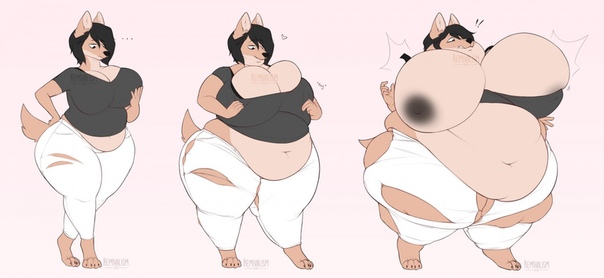 Circulation. 2009 Oct;120((16)):1640–5. [PubMed] [Google Scholar]
Circulation. 2009 Oct;120((16)):1640–5. [PubMed] [Google Scholar]
18. Portincasa P, Moschetta A, Palasciano G. Cholesterol gallstone disease. Lancet. 2006 Jul;368((9531)):230–9. [PubMed] [Google Scholar]
19. Sahi T, Paffenbarger RS, Jr, Hsieh CC, Lee IM. Body mass index, cigarette smoking, and other characteristics as predictors of self-reported, physician-diagnosed gallbladder disease in male college alumni. Am J Epidemiol. 1998 Apr;147((7)):644–51. [PubMed] [Google Scholar]
20. Freeman JB, Meyer PD, Printen KJ, Mason EE, DenBesten L. Analysis of gallbladder bile in morbid obesity. Am J Surg. 1975 Feb;129((2)):163–6. [PubMed] [Google Scholar]
21. Di Ciaula A, Wang DQ, Portincasa P. Gallbladder and gastric motility in obese newborns, pre-adolescents and adults. J Gastroenterol Hepatol. 2012 Aug;27((8)):1298–305. [PubMed] [Google Scholar]
22. Liu T, Siyin ST, Yao N, Duan N, Xu G, Li W, et al. Relationship between high-sensitivity C reactive protein and the risk of gallstone disease: results from the Kailuan cohort study. BMJ Open. 2020 Sep;10((9)):e035880. [PMC free article] [PubMed] [Google Scholar]
BMJ Open. 2020 Sep;10((9)):e035880. [PMC free article] [PubMed] [Google Scholar]
23. Kwaifa IK, Bahari H, Yong YK, Noor SM. Endothelial Dysfunction in Obesity-Induced Inflammation: Molecular Mechanisms and Clinical Implications. Biomolecules. 2020 Feb;10((2)):291. [PMC free article] [PubMed] [Google Scholar]
24. Cozma A, Orăşan O, Sâmpelean D, Fodor A, Vlad C, Negrean V, et al. Endothelial dysfunction in metabolic syndrome. Rom J Intern Med. 2009;47((2)):133–40. [PubMed] [Google Scholar]
25. Broomfield PH, Chopra R, Sheinbaum RC, Bonorris GG, Silverman A, Schoenfield LJ, et al. Effects of ursodeoxycholic acid and aspirin on the formation of lithogenic bile and gallstones during loss of weight. N Engl J Med. 1988 Dec;319((24)):1567–72. [PubMed] [Google Scholar]
26. Liddle RA, Goldstein RB, Saxton J. Gallstone formation during weight-reduction dieting. Arch Intern Med. 1989 Aug;149((8)):1750–3. [PubMed] [Google Scholar]
27. Weinsier RL, Wilson LJ, Lee J. Medically safe rate of weight loss for the treatment of obesity: a guideline based on risk of gallstone formation. Am J Med. 1995 Feb;98((2)):115–7. [PubMed] [Google Scholar]
Am J Med. 1995 Feb;98((2)):115–7. [PubMed] [Google Scholar]
28. Li VK, Pulido N, Fajnwaks P, Szomstein S, Rosenthal R, Martinez-Duartez P. Predictors of gallstone formation after bariatric surgery: a multivariate analysis of risk factors comparing gastric bypass, gastric banding, and sleeve gastrectomy. Surg Endosc. 2009 Jul;23((7)):1640–4. [PubMed] [Google Scholar]
29. Shiffman ML, Kaplan GD, Brinkman-Kaplan V, Vickers FF. Prophylaxis against gallstone formation with ursodeoxycholic acid in patients participating in a very-low-calorie diet program. Ann Intern Med. 1995 Jun;122((12)):899–905. [PubMed] [Google Scholar]
30. Shiffman ML, Sugerman HJ, Kellum JH, Brewer WH, Moore EW. Gallstones in patients with morbid obesity. Relationship to body weight, weight loss and gallbladder bile cholesterol solubility. Int J Obes Relat Metab Disord. 1993 Mar;17((3)):153–8. [PubMed] [Google Scholar]
31. Sugerman HJ, Brewer WH, Shiffman ML, Brolin RE, Fobi MA, Linner JH, et al. A multicenter, placebo-controlled, randomized, double-blind, prospective trial of prophylactic ursodiol for the prevention of gallstone formation following gastric-bypass-induced rapid weight loss. Am J Surg. 1995 Jan;169((1)):91–6. [PubMed] [Google Scholar]
A multicenter, placebo-controlled, randomized, double-blind, prospective trial of prophylactic ursodiol for the prevention of gallstone formation following gastric-bypass-induced rapid weight loss. Am J Surg. 1995 Jan;169((1)):91–6. [PubMed] [Google Scholar]
32. Adams LB, Chang C, Pope J, Kim Y, Liu P, Yates A. Randomized, Prospective Comparison of Ursodeoxycholic Acid for the Prevention of Gallstones after Sleeve Gastrectomy. Obes Surg. 2016 May;26((5)):990–4. [PubMed] [Google Scholar]
33. O’Brien PE, Dixon JB. A rational approach to cholelithiasis in bariatric surgery: its application to the laparoscopically placed adjustable gastric band. Arch Surg. 2003 Aug;138((8)):908–12. [PubMed] [Google Scholar]
34. Ortega RM, Fernández-Azuela M, Encinas-Sotillos A, Andrés P, López-Sobaler AM. Differences in diet and food habits between patients with gallstones and controls. J Am Coll Nutr. 1997 Feb;16((1)):88–95. [PubMed] [Google Scholar]
35. Syngal S, Coakley EH, Willett WC, Byers T, Williamson DF, Colditz GA. Long-term weight patterns and risk for cholecystectomy in women. Ann Intern Med. 1999 Mar;130((6)):471–7. [PubMed] [Google Scholar]
Long-term weight patterns and risk for cholecystectomy in women. Ann Intern Med. 1999 Mar;130((6)):471–7. [PubMed] [Google Scholar]
36. Tsai CJ, Leitzmann MF, Willett WC, Giovannucci EL. Weight cycling and risk of gallstone disease in men. Arch Intern Med. 2006 Nov;166((21)):2369–74. [PubMed] [Google Scholar]
37. Gebhard RL, Prigge WF, Ansel HJ, Schlasner L, Ketover SR, Sande D, et al. The role of gallbladder emptying in gallstone formation during diet-induced rapid weight loss. Hepatology. 1996 Sep;24((3)):544–8. [PubMed] [Google Scholar]
38. Shiffman ML, Sugerman HJ, Kellum JM, Moore EW. Changes in gallbladder bile composition following gallstone formation and weight reduction. Gastroenterology. 1992 Jul;103((1)):214–21. [PubMed] [Google Scholar]
39. Worni M, Guller U, Shah A, Gandhi M, Shah J, Rajgor D, et al. Cholecystectomy concomitant with laparoscopic gastric bypass: a trend analysis of the nationwide inpatient sample from 2001 to 2008. Obes Surg. 2012 Feb;22((2)):220–9. [PubMed] [Google Scholar]
[PubMed] [Google Scholar]
40. Hamad GG, Ikramuddin S, Gourash WF, Schauer PR. Elective cholecystectomy during laparoscopic Roux-en-Y gastric bypass: is it worth the wait? Obes Surg. 2003 Feb;13((1)):76–81. [PubMed] [Google Scholar]
41. Warschkow R, Tarantino I, Ukegjini K, Beutner U, Güller U, Schmied BM, et al. Concomitant cholecystectomy during laparoscopic Roux-en-Y gastric bypass in obese patients is not justified: a meta-analysis. Obes Surg. 2013 Mar;23((3)):397–407. [PubMed] [Google Scholar]
42. Kim JJ, Schirmer B. Safety and efficacy of simultaneous cholecystectomy at Roux-en-Y gastric bypass. Surg Obes Relat Dis. 2009 Jan-Feb;5((1)):48–53. [PubMed] [Google Scholar]
43. Swartz DE, Felix EL. Elective cholecystectomy after Roux-en-Y gastric bypass: why should asymptomatic gallstones be treated differently in morbidly obese patients? Surg Obes Relat Dis. 2005 Nov-Dec;1((6)):555–60. [PubMed] [Google Scholar]
44. Reeves JJ, Burton BN, Broderick RC, et al. Obesity and unanticipated hospital admission following outpatient laparoscopic cholecystectomy. Surg Endosc. 2020;••• [PubMed] [Google Scholar]
Obesity and unanticipated hospital admission following outpatient laparoscopic cholecystectomy. Surg Endosc. 2020;••• [PubMed] [Google Scholar]
45. Ammori BJ, Vezakis A, Davides D, Martin IG, Larvin M, McMahon MJ. Laparoscopic cholecystectomy in morbidly obese patients. Surg Endosc. 2001 Nov;15((11)):1336–9. [PubMed] [Google Scholar]
46. Gutt C, Jenssen C, Barreiros AP, Götze TO, Stokes CS, Jansen PL, et al.für die Teilnehmer der Konsensuskonferenz. Deutsche Gesellschaft für Innere Medizin e.V. (DGIM) Österreichische Gesellschaft für Gastroenterologie und Hepatologie (ÖGGH) Schweizer Gesellschaft für Gastroenterologie (SGH) Gesellschaft für Humangenetik (GfH) Deutsche Gesellschaft für Ultraschall in der Medizin (DEGUM) Deutsche Gesellschaft für Chirurgie (DGCH) Institut für Qualitätssicherung und Transparenz im Gesundheitswesen (IQTIG; beratende Funktion ohne Stimmrecht) Deutsche Arbeitsgemeinschaft zum Studium der Leber (GASL) Deutsche Röntgengesellschaft (DRG) Deutsche Leberhilfe e. V. [Updated S3-Guideline for Prophylaxis, Diagnosis and Treatment of Gallstones. German Society for Digestive and Metabolic Diseases (DGVS) and German Society for Surgery of the Alimentary Tract (DGAV) – AWMF Registry 021/008] Z Gastroenterol. 2018 Aug;56((8)):912–66. [PubMed] [Google Scholar]
V. [Updated S3-Guideline for Prophylaxis, Diagnosis and Treatment of Gallstones. German Society for Digestive and Metabolic Diseases (DGVS) and German Society for Surgery of the Alimentary Tract (DGAV) – AWMF Registry 021/008] Z Gastroenterol. 2018 Aug;56((8)):912–66. [PubMed] [Google Scholar]
47. European Association for the Study of the Liver (EASL). Electronic address: [email protected] EASL Clinical Practice Guidelines on the prevention, diagnosis and treatment of gallstones. J Hepatol. 2016 Jul;65((1)):146–81. [PubMed] [Google Scholar]
48. Tsirline VB, Keilani ZM, El Djouzi S, Phillips RC, Kuwada TS, Gersin K, et al. How frequently and when do patients undergo cholecystectomy after bariatric surgery? Surg Obes Relat Dis. 2014 Mar-Apr;10((2)):313–21. [PubMed] [Google Scholar]
49. Della Penna A, Lange J, Hilbert J, Archid R, Königsrainer A, Quante M. Ursodeoxycholic Acid for 6 Months After Bariatric Surgery Is Impacting Gallstone Associated Morbidity in Patients with Preoperative Asymptomatic Gallstones.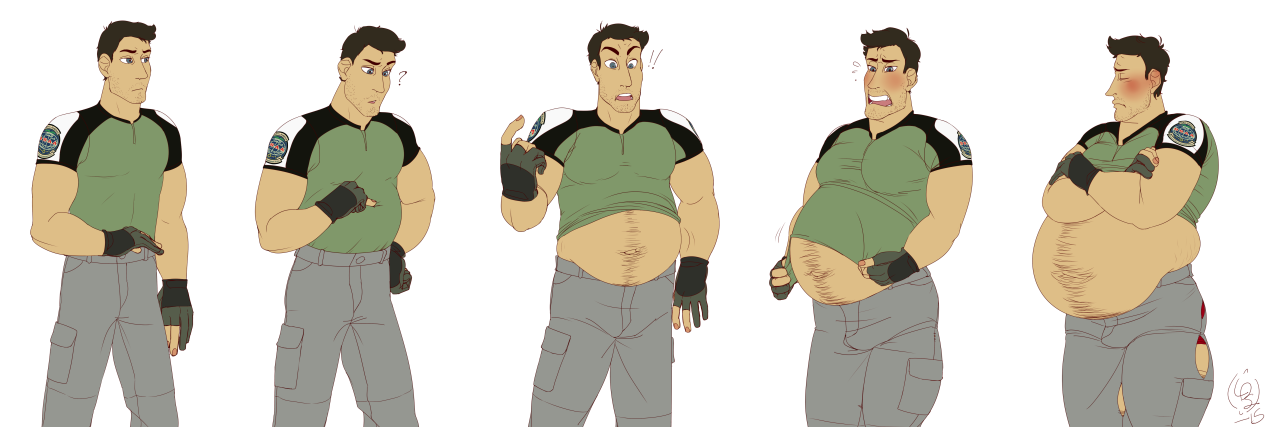 Obes Surg. 2019 Apr;29((4)):1216–21. [PubMed] [Google Scholar]
Obes Surg. 2019 Apr;29((4)):1216–21. [PubMed] [Google Scholar]
50. Anveden Å, Peltonen M, Näslund I, Torgerson J, Carlsson LM. Long-term incidence of gallstone disease after bariatric surgery: results from the nonrandomized controlled Swedish Obese Subjects study. Surg Obes Relat Dis. 2020 Oct;16((10)):1474–82. [PubMed] [Google Scholar]
51. Kamrath RO, Plummer LJ, Sadur CN, Adler MA, Strader WJ, Young RL, et al. Cholelithiasis in patients treated with a very-low-calorie diet. Am J Clin Nutr. 1992 Jul;56((1 Suppl)):255S–7S. [PubMed] [Google Scholar]
52. Festi D, Colecchia A, Orsini M, Sangermano A, Sottili S, Simoni P, et al. Gallbladder motility and gallstone formation in obese patients following very low calorie diets. Use it (fat) to lose it (well) Int J Obes Relat Metab Disord. 1998 Jun;22((6)):592–600. [PubMed] [Google Scholar]
53. Stokes CS, Gluud LL, Casper M, Lammert F. Ursodeoxycholic acid and diets higher in fat prevent gallbladder stones during weight loss: a meta-analysis of randomized controlled trials. Clin Gastroenterol Hepatol. 2014 Jul;12((7)):1090–1100.e2. [PubMed] [Google Scholar]
Clin Gastroenterol Hepatol. 2014 Jul;12((7)):1090–1100.e2. [PubMed] [Google Scholar]
54. Malik VS, Schulze MB, Hu FB. Intake of sugar-sweetened beverages and weight gain: a systematic review. Am J Clin Nutr. 2006 Aug;84((2)):274–88. [PMC free article] [PubMed] [Google Scholar]
55. Vartanian LR, Schwartz MB, Brownell KD. Effects of soft drink consumption on nutrition and health: a systematic review and meta-analysis. Am J Public Health. 2007 Apr;97((4)):667–75. [PMC free article] [PubMed] [Google Scholar]
56. Harland JI, Garton LE. Whole-grain intake as a marker of healthy body weight and adiposity. Public Health Nutr. 2008 Jun;11((6)):554–63. [PubMed] [Google Scholar]
57. Savage JS, Marini M, Birch LL. Dietary energy density predicts women’s weight change over 6 y. Am J Clin Nutr. 2008 Sep;88((3)):677–84. [PMC free article] [PubMed] [Google Scholar]
58. Bes-Rastrollo M, van Dam RM, Martinez-Gonzalez MA, Li TY, Sampson LL, Hu FB. Prospective study of dietary energy density and weight gain in women. Am J Clin Nutr. 2008 Sep;88((3)):769–77. [PMC free article] [PubMed] [Google Scholar]
Am J Clin Nutr. 2008 Sep;88((3)):769–77. [PMC free article] [PubMed] [Google Scholar]
59. Hooper L, Abdelhamid A, Moore HJ, Douthwaite W, Skeaff CM, Summerbell CD. Effect of reducing total fat intake on body weight: systematic review and meta-analysis of randomised controlled trials and cohort studies. BMJ. 2012 Dec;345(dec06 1):e7666. [PMC free article] [PubMed] [Google Scholar]
60. Arbeitsgemeinschaft der Wissenschaftlichen Medizinischen Fachgesellschaften (AWMF Online). Interdisziplinäre Leitlinie der Qualität S3 zur „Prävention und Therapie der Adipositas“. 2014 Registernummer 050 − 001. Deutsche Adipositas-Gesellschaft (DAG) e.V., Deutsche Diabetes Gesellschaft (DDG), Deutsche Gesellschaft für Ernährung (DGE) e.V., Deutsche Gesellschaft für Ernährungsmedizin (DGEM) e.V. [Google Scholar]
61. Tsai CJ, Leitzmann MF, Willett WC, Giovannucci EL. Glycemic load, glycemic index, and carbohydrate intake in relation to risk of cholecystectomy in women. Gastroenterology. 2005 Jul;129((1)):105–12. [PubMed] [Google Scholar]
[PubMed] [Google Scholar]
62. Tsai CJ, Leitzmann MF, Willett WC, Giovannucci EL. Dietary carbohydrates and glycaemic load and the incidence of symptomatic gall stone disease in men. Gut. 2005 Jun;54((6)):823–8. [PMC free article] [PubMed] [Google Scholar]
63. Misciagna G, Centonze S, Leoci C, Guerra V, Cisternino AM, Ceo R, et al. Diet, physical activity, and gallstones—a population-based, case-control study in southern Italy. Am J Clin Nutr. 1999 Jan;69((1)):120–6. [PubMed] [Google Scholar]
64. Tsai CJ, Leitzmann MF, Willett WC, Giovannucci EL. Fruit and vegetable consumption and risk of cholecystectomy in women. Am J Med. 2006 Sep;119((9)):760–7. [PubMed] [Google Scholar]
65. Nordenvall C, Oskarsson V, Wolk A. Fruit and vegetable consumption and risk of cholecystectomy: a prospective cohort study of women and men. Eur J Nutr. 2018 Feb;57((1)):75–81. [PMC free article] [PubMed] [Google Scholar]
66. Tsai CJ, Leitzmann MF, Willett WC, Giovannucci EL. Long-term intake of dietary fiber and decreased risk of cholecystectomy in women.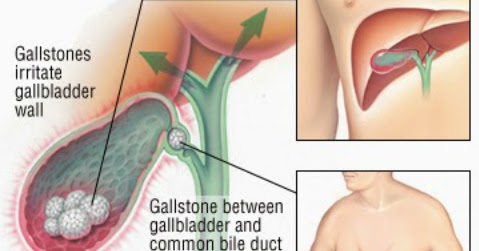 Am J Gastroenterol. 2004 Jul;99((7)):1364–70. [PubMed] [Google Scholar]
Am J Gastroenterol. 2004 Jul;99((7)):1364–70. [PubMed] [Google Scholar]
67. Morán S, Milke P, Rodríguez-Leal G, Uribe M. Ref: gallstone formation in obese subjects undergoing a weight reduction diet. Int J Obes Relat Metab Disord. 1998 Mar;22((3)):282–4. [PubMed] [Google Scholar]
68. Barré A, Gusto G, Cadeau C, Carbonnel F, Boutron-Ruault MC. Diet and risk of cholecystectomy: a prospective study based on the French E3N cohort. Am J Gastroenterol. 2017 Sep;112((9)):1448–56. [PubMed] [Google Scholar]
69. Tsai CJ, Leitzmann MF, Hu FB, Willett WC, Giovannucci EL. Frequent nut consumption and decreased risk of cholecystectomy in women. Am J Clin Nutr. 2004 Jul;80((1)):76–81. [PubMed] [Google Scholar]
70. Tsai CJ, Leitzmann MF, Willett WC, Giovannucci EL. The effect of long-term intake of cis unsaturated fats on the risk for gallstone disease in men: a prospective cohort study. Ann Intern Med. 2004 Oct;141((7)):514–22. [PubMed] [Google Scholar]
71. Tsai CJ, Leitzmann MF, Willett WC, Giovannucci EL. Long-term intake of trans-fatty acids and risk of gallstone disease in men. Arch Intern Med. 2005 May;165((9)):1011–5. [PubMed] [Google Scholar]
Long-term intake of trans-fatty acids and risk of gallstone disease in men. Arch Intern Med. 2005 May;165((9)):1011–5. [PubMed] [Google Scholar]
72. Tsai CJ, Leitzmann MF, Willett WC, Giovannucci EL. Long-chain saturated fatty acids consumption and risk of gallstone disease among men. Ann Surg. 2008 Jan;247((1)):95–103. [PubMed] [Google Scholar]
73. Berr F, Holl J, Jüngst D, Fischer S, Richter WO, Seifferth B, et al. Dietary N-3 polyunsaturated fatty acids decrease biliary cholesterol saturation in gallstone disease. Hepatology. 1992 Oct;16((4)):960–7. [PubMed] [Google Scholar]
74. Méndez-Sánchez N, González V, Aguayo P, Sánchez JM, Tanimoto MA, Elizondo J, et al. Fish oil (n-3) polyunsaturated fatty acids beneficially affect biliary cholesterol nucleation time in obese women losing weight. J Nutr. 2001 Sep;131((9)):2300–3. [PubMed] [Google Scholar]
75. Jonkers IJ, Smelt AH, Ledeboer M, Hollum ME, Biemond I, Kuipers F, et al. Gall bladder dysmotility: a risk factor for gall stone formation in hypertriglyceridaemia and reversal on triglyceride lowering therapy by bezafibrate and fish oil. Gut. 2003 Jan;52((1)):109–15. [PMC free article] [PubMed] [Google Scholar]
Gut. 2003 Jan;52((1)):109–15. [PMC free article] [PubMed] [Google Scholar]
76. Attili AF, Scafato E, Marchioli R, Marfisi RM, Festi D. Diet and gallstones in Italy: the cross-sectional MICOL results. Hepatology. 1998 Jun;27((6)):1492–8. [PubMed] [Google Scholar]
77. Leitzmann MF, Giovannucci EL, Rimm EB, Stampfer MJ, Spiegelman D, Wing AL, et al. The relation of physical activity to risk for symptomatic gallstone disease in men. Ann Intern Med. 1998 Mar;128((6)):417–25. [PubMed] [Google Scholar]
78. Leitzmann MF, Rimm EB, Willett WC, Spiegelman D, Grodstein F, Stampfer MJ, et al. Recreational physical activity and the risk of cholecystectomy in women. N Engl J Med. 1999 Sep;341((11)):777–84. [PubMed] [Google Scholar]
79. Storti KL, Brach JS, FitzGerald SJ, Zmuda JM, Cauley JA, Kriska AM. Physical activity and decreased risk of clinical gallstone disease among post-menopausal women. Prev Med. 2005 Sep-Oct;41((3-4)):772–7. [PubMed] [Google Scholar]
80. Utter AC, Whitcomb DC, Nieman DC, Butterworth DE, Vermillion SS. Effects of exercise training on gallbladder function in an obese female population. Med Sci Sports Exerc. 2000 Jan;32((1)):41–5. [PubMed] [Google Scholar]
Effects of exercise training on gallbladder function in an obese female population. Med Sci Sports Exerc. 2000 Jan;32((1)):41–5. [PubMed] [Google Scholar]
81. Ko CW, Napolitano PG, Lee SP, Schulte SD, Ciol MA, Beresford SA. Physical activity, maternal metabolic measures, and the incidence of gallbladder sludge or stones during pregnancy: a randomized trial. Am J Perinatol. 2014 Jan;31((1)):39–48. [PubMed] [Google Scholar]
82. Williams C, Gowan R, Perey BJ. A double-blind placebo-controlled trial of ursodeoxycholic acid in the prevention of gallstones during weight loss after vertical banded gastroplasty. Obes Surg. 1993 Aug;3((3)):257–9. [PubMed] [Google Scholar]
83. Worobetz LJ, Inglis FG, Shaffer EA. The effect of ursodeoxycholic acid therapy on gallstone formation in the morbidly obese during rapid weight loss. Am J Gastroenterol. 1993 Oct;88((10)):1705–10. [PubMed] [Google Scholar]
84. Wudel LJ, Jr, Wright JK, Debelak JP, Allos TM, Shyr Y, Chapman WC. Prevention of gallstone formation in morbidly obese patients undergoing rapid weight loss: results of a randomized controlled pilot study. J Surg Res. 2002 Jan;102((1)):50–6. [PubMed] [Google Scholar]
J Surg Res. 2002 Jan;102((1)):50–6. [PubMed] [Google Scholar]
85. Miller K, Hell E, Lang B, Lengauer E. Gallstone formation prophylaxis after gastric restrictive procedures for weight loss: a randomized double-blind placebo-controlled trial. Ann Surg. 2003 Nov;238((5)):697–702. [PMC free article] [PubMed] [Google Scholar]
86. Villegas L, Schneider B, Provost D, Chang C, Scott D, Sims T, et al. Is routine cholecystectomy required during laparoscopic gastric bypass? Obes Surg. 2004 Feb;14((2)):206–11. [PubMed] [Google Scholar]
87. Ellner SJ, Myers TT, Piorkowski JR, Mavanur AA, Barba CA. Routine cholecystectomy is not mandatory during morbid obesity surgery. Surg Obes Relat Dis. 2007 Jul-Aug;3((4)):456–60. [PubMed] [Google Scholar]
88. Coupaye M, Calabrese D, Sami O, Msika S, Ledoux S. Evaluation of incidence of cholelithiasis after bariatric surgery in subjects treated or not treated with ursodeoxycholic acid. Surg Obes Relat Dis. 2017 Apr;13((4)):681–5. [PubMed] [Google Scholar]
89. Pizza F, D’Antonio D, Lucido FS, Tolone S, Del Genio G, Dell’Isola C, et al. The Role of Ursodeoxycholic Acid (UDCA) in Cholelithiasis Management After One Anastomosis Gastric Bypass (OAGB) for Morbid Obesity: Results of a Monocentric Randomized Controlled Trial. Obes Surg. 2020 Nov;30((11)):4315–24. [PubMed] [Google Scholar]
Pizza F, D’Antonio D, Lucido FS, Tolone S, Del Genio G, Dell’Isola C, et al. The Role of Ursodeoxycholic Acid (UDCA) in Cholelithiasis Management After One Anastomosis Gastric Bypass (OAGB) for Morbid Obesity: Results of a Monocentric Randomized Controlled Trial. Obes Surg. 2020 Nov;30((11)):4315–24. [PubMed] [Google Scholar]
Gallstones and Weight Loss: Family Medicine and Acute Care of Sandhills: Primary Care Practice
Gallstones and Weight Loss: Family Medicine and Acute Care of Sandhills: Primary Care Practice
The illness and pain that gallstones cause are formidable. For their diminutive size, they bring a great many unpleasant symptoms, including pain in the shoulder and shoulder blade, fever, nausea and vomiting, and pain in your upper and middle abdomen that typically starts abruptly and worsens quickly.
You might also develop jaundice, which gives your skin and eyes a yellow tone.
Gallstone risk factors include being female (there are twice as many women who suffer from gallstones than men), being over 60, living with diabetes, and being obese. The conundrum is that even though being significantly overweight can lead to gallstones, so can fasting and simply losing weight too rapidly.
The conundrum is that even though being significantly overweight can lead to gallstones, so can fasting and simply losing weight too rapidly.
Ronnita Holden, PA, and the team at Family Medicine and Acute Care of Sandhills are experts in treating the problems that accompany gallstones and teaming up with you to prevent them in the future.
We understand how life-altering it is to have the pain of gallstones, or the uncertainty of when pain will strike and how long it will last.
What are gallstones, exactly?
Your gallbladder, located on your right side, under your liver, produces and holds your bile, which is digestive fluid. When bits of bile harden, gallstones develop, and then they just sit there Eventually, they can start causing problems.
Gallstones can be as tiny as a speck of dirt or as large as a golf ball. You can also have them but suffer no symptoms, in which case no treatment is needed.
The link between gallstones and weight loss
While you can develop gallstones if you’re unable to lose weight, the very act of attempting to lose weight — especially if you do it too quickly — also raises your risk for them.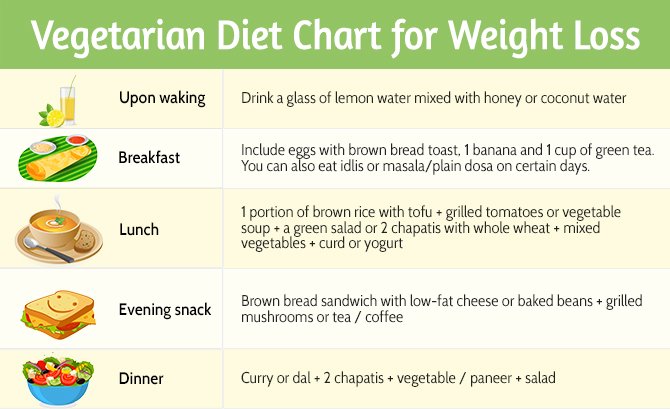
The reason? If your body is in rapid weight loss mode, your liver reacts by producing greater amounts of cholesterol or bilirubin (a golden substance, also secreted by the liver into your bile, that helps your body break down red blood cells). This overproduction puts your body into a disequilibrium.
Losing three or more pounds per week would be considered accelerated weight loss and could tip you toward gallstones. Both strict dieters and those who’ve had bariatric surgery can lose this amount per week.
What if I develop gallstones?
If you end up with gallstones that cause symptoms, a range of treatments can help, depending on your condition:
- Oral medication containing bile acid to dissolve the gallstones
- Gallbladder injections that contain substances to dissolve the stones
- Shockwave therapy that breaks up gallstones
- Gallbladder removal surgery
Surgery is common because other treatments can take long periods of time to effectively provide relief.
How can I lose weight safely in order to avoid gallstones?
Fortunately, we offer weight loss services based on sound practices. It’s one of the many benefits of medically supervised weight loss: Since we’re overseeing every aspect of your weight loss plan and your progress, you won’t lose too many pounds too quickly, taming the risk of developing gallstones.
The North Carolina Center for Weight Loss Management has proven to be the most effective approach for our patients. Our providers not only create a nutritious and sensible eating plan for you, but offer tools like safe, FDA-approved appetite suppressants, and injections that actually cause your body to burn more fat.
Very importantly, you can ask questions and get needed support as you travel along your weight loss journey from beginning to end.
We also help you with other components of a successful plan in addition to what you eat, like incorporating physical activity into your life and managing your stress well.
Weight loss obviously supports your good health in many ways, and reduces your chances of being affected by many other health conditions in addition to gallstones.
We’re here to help you control your weight in the healthiest way possible, and help you steer clear of gallstones.
Call our office in Cameron, North Carolina, at 919-295-6862 to schedule a consultation with us, or request an appointment online. You can also send a message to the team here on our website.
Coronary Artery Disease Symptoms and What to Do About Them
Heart disease earns its name as the silent killer by presenting few symptoms to warn of its presence. Fortunately, there are some symptoms of coronary artery disease to look out for. Here’s what to watch for and how to react.
Constant Worrying: How to Manage Intrusive Thoughts
Do you frequently experience troubling thoughts? You’re definitely not alone. At least 6 million Americans deal with unwanted thoughts. Find out what causes these intrusive thoughts and how you can manage them.
At least 6 million Americans deal with unwanted thoughts. Find out what causes these intrusive thoughts and how you can manage them.
5 SPF Products Women Should Purchase During Summer
Think beyond traditional sunscreen when it comes to protecting your skin from the sun’s damaging rays. There are all sorts of innovative products to pair with your sunscreen that lower your risk of both skin damage and skin cancer.
How to Manage Severe Mood Swings
Life is full of ups and downs, happy days, sad days, and in-between days. But if yours are intense and switch back and forth often, you may need some help managing your moods. Read on to learn what to do.
Solutions to Panic Attacks You Can Instantly Use and Why They Work
Panic attacks can be distressing experiences, which can also cause uncomfortable physical symptoms.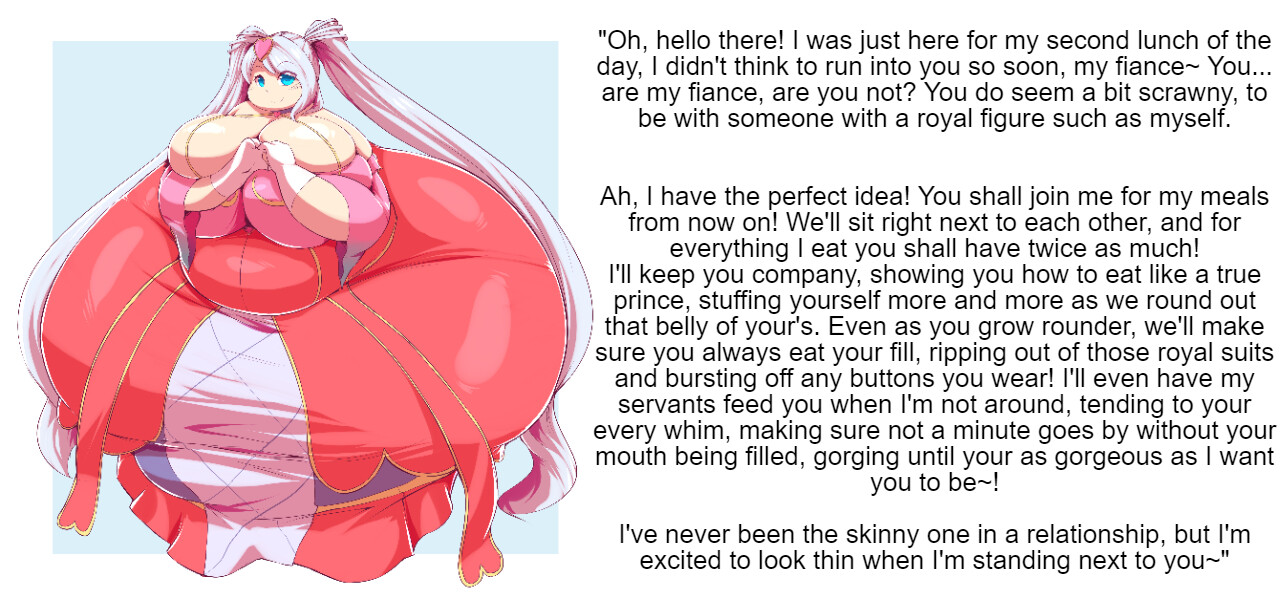 Although panic attacks are common, they aren’t a reason to have to suffer. Learn more about how to manage panic attacks with some simple solutions.
Although panic attacks are common, they aren’t a reason to have to suffer. Learn more about how to manage panic attacks with some simple solutions.
5 Important Steps Everyone Can Take to Help Prevent Heart Disease
Heart disease is the leading cause of death in the United States. What you may not know is that heart disease is often preventable. Read on to learn how you can decrease your chances of developing heart disease.
Cholelithiasis: symptoms and causes of the disease
Contents
- 1 Cholelithiasis: symptoms, causes and treatment
- 1.1 Cholelithiasis: symptoms and causes
- 1.1.1 Symptoms of cholelithiasis
- 1.1.2 Causes of cholelithiasis
- 1.2 Cholelithiasis — what is this disease?
- 1.3 Symptoms of cholelithiasis
- 1.4 Causes of cholelithiasis
- 1.5 Risk factors for cholelithiasis
- 1.
 6 Diagnosis of cholelithiasis
6 Diagnosis of cholelithiasis- 1.6.1 History and physical examination
- 1.6.2 Laboratory and instrumental examinations
- 1.6.3 Differential diagnosis
- 1.7 How can cholelithiasis be prevented?
- 1.8 Treatment of cholelithiasis
- 1.9 Oral litholytic therapy for cholelithiasis
- 1.10 Surgical treatment for cholelithiasis
- 1.11 Emergency emergency surgery
- 9000 5 1.11.1 When is emergency surgery needed for cholelithiasis?
- 1.11.2 How is surgery for cholelithiasis performed?
- 1.11.3 What are the risks of emergency surgery?
- 1.1 Cholelithiasis: symptoms and causes
- 1.12 Is there a danger to life with cholelithiasis?
- 1.12.1 What is cholelithiasis?
- 1.12.2 What are the symptoms associated with cholelithiasis?
- 1.12.3 Is there a threat to life with cholelithiasis?
- 1.12.4 Basic treatments for cholelithiasis
- 1.13 Related videos:
- 1.14 Q&A:
- 1.
 14.0.1 What is cholelithiasis?
14.0.1 What is cholelithiasis? - 1.14.0.2 What are the symptoms of cholelithiasis?
- 1.14.0.3 What are the causes of cholelithiasis?
- 1.14.0.4 How is cholelithiasis diagnosed?
- 1.14.0.5 What are the treatments for cholelithiasis?
- 1.14.0.6 What are the consequences of not treating cholelithiasis?
- 1.
Cholelithiasis is a disease associated with the formation of stones in the gallbladder and bile ducts. The article lists the symptoms that can help diagnose the disease, as well as the causes of cholelithiasis. Be sure to read before contacting a doctor.
Cholelithiasis is a common condition that causes gallstones to form in the gallbladder and bile ducts. The disease not only greatly impairs the quality of life, but can also cause various complications.
The causes of cholelithiasis can be different. The most common cause is a violation of the metabolism of fats and cholesterol in the body.:max_bytes(150000):strip_icc()/why-is-my-cholesterol-high-5202471-FINAL-6751de0d37d641858ae9ec93024d5874.jpg) However, the disease can also be caused by other factors, such as indigestion, heredity, and other diseases of the digestive system.
However, the disease can also be caused by other factors, such as indigestion, heredity, and other diseases of the digestive system.
The symptoms of cholelithiasis can manifest themselves in a variety of ways. In some patients, the disease may be asymptomatic, while in others, gallstones can cause acute pain in the right hypochondrium, nausea and vomiting, fever, and other health problems.
It is important to pay attention to the symptoms of the disease and consult a doctor in time for professional diagnosis and treatment of cholelithiasis.
Cholelithiasis: Symptoms and causes
Symptoms of cholelithiasis
Cholelithiasis, or cholelithiasis, is characterized by acute pain in the right hypochondrium, which can last for several hours. Other symptoms include:
- nausea, vomiting
- diarrhea or constipation
- jaundice
- itchy skin
If you experience these symptoms, you should see a doctor for diagnosis and treatment.
Causes of cholelithiasis
Cholelithiasis still has no known cause, but scientific research indicates several factors that may increase the risk of developing the disease:
- High blood cholesterol
- High pressure in the gallbladder
- Digestive disorders
- Genetic predisposition
- Overweight or obesity
- Certain drugs 9 0010
- High estrogen levels due to pregnancy or oral contraceptives
Factor Increased risk
| High blood cholesterol | By 33% |
| Digestive disorders | By 20% |
| Genetic predisposition | By 25% |
To reduce the risk of cholelithiasis, you need to monitor your diet, avoid excessive consumption of fatty and fried foods and eat more fruits and vegetables. It is important to consult a doctor and conduct regular examinations in order to timely detect the presence of gallstones.
Cholelithiasis – what kind of disease is it?
Cholelithiasis is a disease associated with the formation of stones in the gallbladder. Stones can be of different sizes and shapes and are made up of cholesterol, bilirubin, or calcium.
Cholelithiasis can be caused by a variety of factors, including an unbalanced diet, genetic predisposition, and elevated blood cholesterol levels. Some people develop cholelithiasis due to other diseases, such as cirrhosis of the liver or metabolic syndrome syndrome.
- Risk factors:
- Female;
- Age over 40;
- Obesity;
- Diabetes mellitus;
- Unbalanced diet high in fat and cholesterol;
- Genetic predisposition.
The diagnosis of cholelithiasis can be established by a series of tests, such as ultrasound of the gallbladder and bile duct catheterization. Treatment may include conservative treatment or surgery to remove the gallbladder.
In general, cholelithiasis is a serious disease, although in most cases it does not pose a threat to health. However, if you have symptoms of cholelithiasis, you should see your doctor for diagnosis and treatment.
Symptoms of cholelithiasis
Cholelithiasis or cholelithiasis is a pathological condition that manifests itself in the formation of stones in the gallbladder or biliary tract. Although many people have gallstones, problems arise when they block the flow of bile.
The main symptoms of cholelithiasis include:
- Colic – Sharp pain in the right upper abdomen or in the center of the abdomen, which may radiate to the back or right shoulder. Colic can last from a few minutes to several hours.
- Nausea and vomiting – these symptoms may accompany colic and may be caused by bile stasis due to stones blocking the exit of the gallbladder.
- Jaundice is a condition in which the skin and whites of the eyes turn yellow and the urine becomes dark.
 It occurs in diseases of the liver, also associated with gallstones.
It occurs in diseases of the liver, also associated with gallstones. - Other symptoms such as heartburn, general weakness and loss of appetite may also occur in patients with cholelithiasis.
If you experience these symptoms, especially colic, seek immediate medical attention.
Causes of cholelithiasis
Cholelithiasis, or cholelithiasis, is a common disease that occurs as a result of the formation of stones in the gallbladder and bile ducts.
Certain types of drugs can also increase the risk of developing cholelithiasis, including drugs used to treat hypertension and diabetes.
In addition, women have a higher risk of developing cholelithiasis during pregnancy and after menopause, probably due to changes in hormone levels.
- Factors that increase the risk of cholelithiasis:
- unbalanced diet high in animal fats and cholesterol;
- heredity;
- sedentary lifestyle;
- overweight;
- certain types of drugs;
- age (women, after menopause and pregnancy).

Risk factors for cholelithiasis
Eating habits play an important role in causing cholelithiasis. Eating a lot of fatty, fried, and high-calorie foods can cause gallstones to form.
Heredity is also a risk factor. If someone in the family had a case of inflammation of the bile ducts, the likelihood of cholelithiasis in relatives increases.
at excess weight to a violation of bile secretion can lead to an increased content of fats in the blood, as well as a decrease in the level of cholesterol in bile.
Diabetes mellitus is also a risk factor for gallstones. Excessive sugar in the blood can lead to metabolic disorders, which contributes to the formation of stones.
Elevated estrogen levels tend to occur in women, especially when taking hormonal drugs, which can cause stones to form.
- Also risk factors are:
- Age after 40 years;
- Some types of anemia;
- Diseases of the gastrointestinal tract;
- Sudden and prolonged weight loss;
- Gastrectomy and other operations;
- Lack of physical activity.

The study of the causes and factors influencing the development of cholelithiasis will help to detect and prevent the disease in a timely manner.
Diagnosis of cholelithiasis
History and physical examination
If cholelithiasis is suspected, the doctor takes anamnesis and physical examination of the patient. The doctor asks the patient about the presence of characteristic symptoms such as pain in the right hypochondrium, nausea, vomiting, liver and gallbladder, and the presence of risk factors such as obesity, diabetes and a family history of the disease. Next, a physical examination is performed, including palpation of the abdomen and assessment of the condition of the skin and sclera.
Laboratory and instrumental studies
For the diagnosis of cholelithiasis, laboratory and instrumental studies are carried out. The blood is tested for bile acids, amylase and white blood cells. Abdominal ultrasound is the most commonly used method for diagnosing cholelithiasis. It allows you to determine the presence of stones in the gallbladder and characterize their size, shape and number. CT, MRI and endoscopic retrograde cholangiopancreatography (ERCP) can also be used to more accurately diagnose and assess the condition of the biliary tract.
It allows you to determine the presence of stones in the gallbladder and characterize their size, shape and number. CT, MRI and endoscopic retrograde cholangiopancreatography (ERCP) can also be used to more accurately diagnose and assess the condition of the biliary tract.
Differential diagnosis
When diagnosing cholelithiasis, it is necessary to carry out a differential diagnosis with other diseases, such as acute pancreatitis, gastric and duodenal ulcers, chronic gastritis and chronic cholecystitis. The decision to diagnose cholelithiasis, as well as the choice of treatment methods, should be based on a joint analysis of all available data and the exclusion of other possible diseases.
How can cholelithiasis be prevented?
Cholelithiasis is a disease that can be prevented through a healthy lifestyle and diet.
- Follow a low-fat diet: Reducing your fat intake may help prevent gallstones.
- Watch your weight: Overweight people are at greater risk of developing cholelithiasis.

- Drink enough water: The need for water will help maintain the correct balance of chemicals in the body and prevent the formation of stones.
- Be active: Moderate physical activity can help prevent cholelithiasis.
- Avoid rapid weight loss: Sudden weight loss is a risk factor for developing cholelithiasis.
If you have a family history of cholelithiasis, you should be aware of this fact and take steps to prevent symptoms. For any changes in health, you should consult a doctor.
Treatment of cholelithiasis
Cholelithiasis – is a serious condition and requires professional treatment. It can be surgical or conservative. In most cases, treatment is based on the removal of stones from the gallbladder or bile ducts.
Surgery: The operation to remove the gallbladder is called a cholecystectomy. This procedure can be performed either traditionally, through an open incision in the abdomen, or minimally invasively, using laparoscopy, which brings less pain and shortens recovery time.
Non-surgical treatment: includes dietary changes and drugs to help improve bile function, break down or reduce stones. Ultrasound waves and laser therapy can be used to crush smaller stones.
- Proper nutrition: dietary changes will help prevent bile suppression, which means reducing the number of new stones and the risk of future stones. The patient should avoid fatty and fried foods, as well as regularly consume vegetables, fruits and foods rich in dietary fiber.
- Medications: Depending on the type of stones and the composition of the bile, the patient may take drugs to break up the stones, restore the function of the biliary tract, improve gallbladder function, and improve digestion and general health.
Oral litholytic therapy for cholelithiasis
Cholelithiasis is a disease associated with the formation of stones in the gallbladder or bile ducts. For the treatment of this disease, one of the methods is oral litholytic therapy.
One of the main advantages of oral litholytic therapy is its non-invasiveness. This means that this treatment method avoids surgery and minimizes the risk of complications.
However, like any other treatment, oral litholytic therapy has its contraindications and side effects. Therefore, only a doctor can decide on the need for this procedure, based on the results of the examination of the patient and the nature of his disease.
Before starting oral litholytic therapy, it is necessary to conduct a comprehensive examination that will help determine the type and number of gallstones, assess the degree of damage to the biliary tract, and identify possible contraindications.
- Contraindications:
- Allergic reaction to the drug;
- Chronic diseases of the liver and kidneys;
- Acute inflammatory processes in the bile ducts and gallbladder;
- Complicated cholecystitis or gallbladder dysfunction;
- Pregnancy and breastfeeding;
- Other diseases contraindicating the use of ursodeoxycholic acid.

Although oral litholytic therapy is one of the safest treatments for cholelithiasis, it should be used only after consultation with and under the supervision of a qualified physician.
Surgical treatment of cholelithiasis
Surgical treatment is a necessary method to eliminate cholelithiasis in the absence of the effect of conservative therapy. The number of surgical interventions for the treatment of gallstone disease has now significantly decreased due to the emergence of new methods of non-invasive diagnosis and treatment.
Another treatment is endoscopic papillotomy, in which the gallstone is destroyed using special instruments inserted through the mouth or small intestine. However, this method has some limitations and may adversely affect the health of the patient in some cases.
There is also oral cholangioscopy, in which the bile ducts and the paths of the intrahepatic biliary tract are probed with special instruments that allow any way to remove stones from the biliary tract.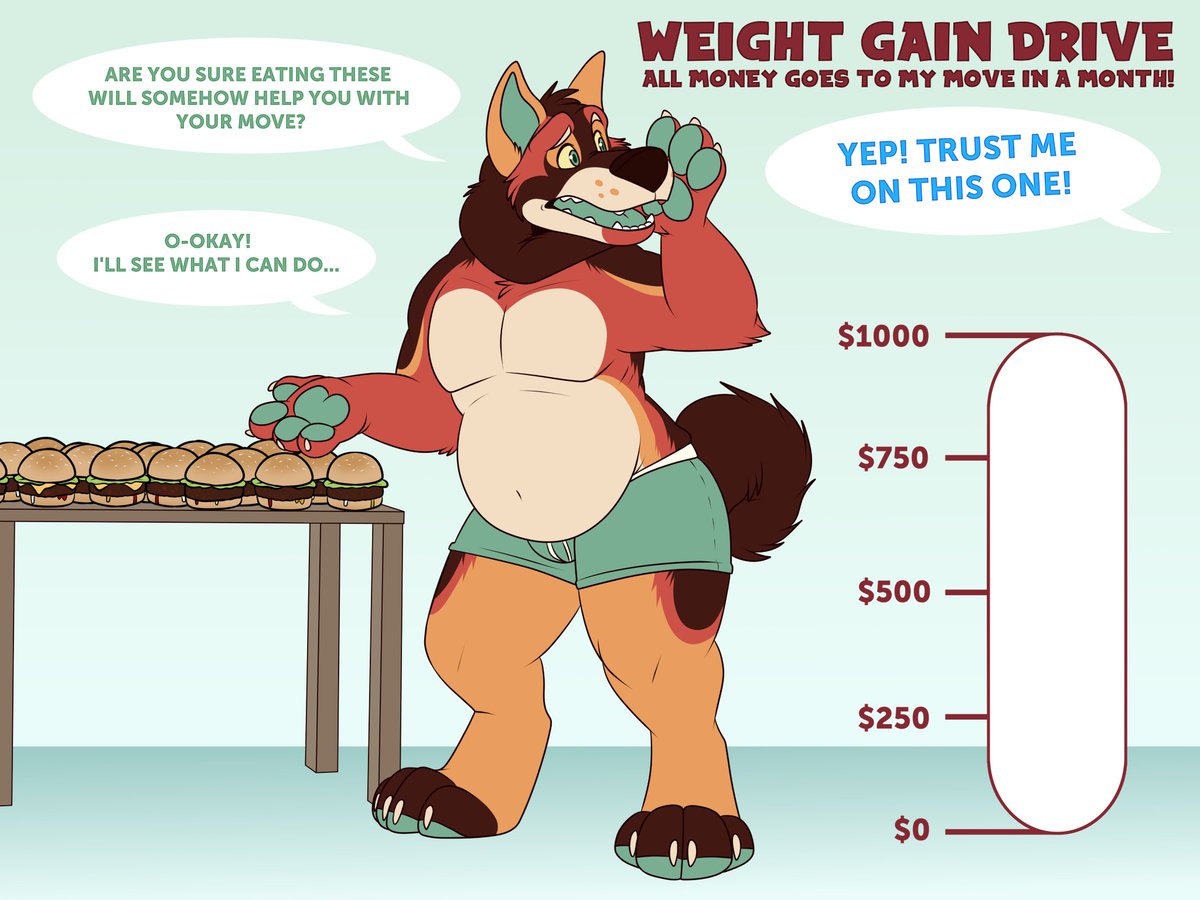 However, this method is not the most common, as it is associated with a risk of complications.
However, this method is not the most common, as it is associated with a risk of complications.
- Laparoscopic cholecystectomy is an operation that removes the gallbladder.
- Endoscopic papillotomy is a treatment that removes gallstones from the bile duct or gallbladder.
- Oral cholangioscopy is a method of removing stones from the biliary tract using specialized instruments.
Emergency emergency surgery
When is emergency surgery needed for cholelithiasis?
Some cases of cholelithiasis may require emergency surgery. For example, if the stone has blocked the bile duct and is preventing bile from leaving the gallbladder. In this case, severe pain in the right upper quadrant of the abdomen, nausea, vomiting, increased body temperature and increased pulse may develop. This condition is called acute bile duct blockage.
If not treated effectively, acute blockage of the bile duct can lead to serious complications such as peritonitis, sepsis, and even death.
How is surgery for cholelithiasis performed?
Surgery to remove the gallbladder, known as cholecystectomy, is the standard procedure for treating cholelithiasis. In case of emergency surgery, the procedure may be more complicated than elective surgery.
- The surgeon makes a small incision in the peritoneum
- The gallbladder is removed
- Repairing the integrity of the bile duct, if necessary
In most cases, this operation is performed by laparoscopy, which reduces the risk of complications and reduces the size of the suture.
What are the risks of emergency surgery?
Like any other surgical procedure, emergency surgery for cholelithiasis comes with risks. These risks include:
- Secondary infections
- Blood loss
- Injury to neighboring organs
- Organ failure
- Infiltration of bile into the abdominal cavity
But it should be noted that the risks of complications are effectively reduced when the procedure is performed in an experienced and qualified surgical clinic .
Is there a danger to life with cholelithiasis?
What is cholelithiasis?
Cholelithiasis is a disease of the biliary tract associated with the formation of stones in the gallbladder or bile ducts. The main reason for the development of the disease is a violation of cholesterol metabolism in the body. The degree of danger of the disease depends on the size and number of stones formed.
What symptoms accompany cholelithiasis?
The symptoms of cholelithiasis can manifest themselves in different ways and depend on the stage of the disease. Most often, patients complain of acute pain in the right hypochondrium, nausea, vomiting, stool disorders, fever.
Is there a threat to life with cholelithiasis?
If complications develop, cholelithiasis can be life threatening. One of the most dangerous complications is blockage of the bile duct, which leads to acute circulatory failure in the liver. In this case, urgent surgical intervention is necessary. Also, cholelithiasis can lead to chronic cholecystitis, pancreatitis and other diseases.
Also, cholelithiasis can lead to chronic cholecystitis, pancreatitis and other diseases.
The main methods of treatment of cholelithiasis
- Diet and proper nutrition. The patient is advised to follow a diet, exclude fatty, spicy, sweet, starchy foods from the diet.
- Medical treatment. Various drugs are used to dissolve stones and eliminate spasms.
- Surgical intervention. In the presence of large stones, acute cholecystitis or other complications, surgery is necessary.
At an early stage of the disease, serious complications can be avoided and health can be maintained by following proper nutrition and doctor’s recommendations.
Related videos:
Q&A:
What is cholelithiasis?
Cholelithiasis (gall bladder stones) is a disease in which stones form in the gallbladder from various bile elements such as cholesterol, calcium salts and bile pigments.
What are the symptoms of cholelithiasis?
Symptoms of cholelithiasis may include: pain in the right upper quadrant of the abdomen, nausea, vomiting, jaundice, fever, and general weakness.
What are the causes of cholelithiasis?
The main causes of cholelithiasis are: an imbalance in the elements of bile, a violation of its outflow, impaired liver and gallbladder function, as well as the presence of a number of genetic and environmental factors, such as age, gender, obesity and diabetes.
How is cholelithiasis diagnosed?
Various methods are used to diagnose cholelithiasis, such as ultrasound of the gallbladder and liver, fluoroscopy, computed tomography, magnetic resonance imaging, retrospective cholangiography, etc.
What are the treatments for cholelithiasis?
Treatment of cholelithiasis can be conservative or surgical. Conservative treatment includes medication, diet and elimination of the causes of the disease. Surgical treatment includes removal of the gallbladder or drainage of the biliary tract.
Surgical treatment includes removal of the gallbladder or drainage of the biliary tract.
What are the consequences of untreated cholelithiasis?
If left untreated, cholelithiasis can cause serious complications such as gallbladder grafting, biliary obstruction, pancreatitis, sepsis, and even death.
Is it possible to cure cholelithiasis without surgery?
Many people are afraid of surgery and are looking for alternative treatments for cholelithiasis. But still have not found an effective way to get rid of gallstones without surgery. To understand why cholelithiasis is a surgical pathology, it is important to know about its origin, symptoms, complications, and treatment methods.
The process of formation of stones in the gallbladder is called gallstone disease. Stones may also be present in the common bile duct. This condition is called choledocholithiasis. In most cases, common bile duct stones are secondary – they form in the gallbladder and then pass into the common duct. Approximately 10% of patients undergoing surgery for gallstones also have common bile duct stones.
Approximately 10% of patients undergoing surgery for gallstones also have common bile duct stones.
What is the gallbladder for?
The gallbladder is located in the upper right part of the abdomen. As part of the biliary system of the liver, it is adjacent to its lower surface. The gallbladder is connected to the liver and intestines by a series of thin ducts.
The main function of the gallbladder is to collect bile, which is continuously produced by the liver. It stores bile until it is needed for digestion.
Food enters the small intestine. This releases the hormone cholecystokinin, which causes the gallbladder to contract and deliver bile to the intestines. The force of contraction pushes bile through the common bile duct into the small intestine, where it emulsifies (breaks down) fatty molecules.
This part of the digestion process allows emulsified fat, along with fat-soluble vitamins (A, D, E and K), to pass through the intestinal mucosa and into the bloodstream.
When the digestion of food is finished, the gallbladder relaxes and begins to accumulate bile again.
Bile is a yellow-brown liquid containing water, bile salts, cholesterol, bilirubin and lecithin.
The liver produces about three glasses of bile every day. Substances included in its composition, including bile acids, their salts and lecithin, act as detergents, breaking down fat so that it is easier to digest and absorb.
Other components of bile such as bilirubin are waste products. Bilirubin is a dark brown substance resulting from the breakdown of hemoglobin. It imparts the characteristic color of bile, brown stools, and straw yellow urine.
Types and causes of gallstones
Gallstones are small hard deposits that form in bile when it thickens too much. The formation of stones begins with an increase in the concentration of bile, caused by various reasons. Most fatty acids are made from cholesterol. Less common are bilirubin.
Most fatty acids are made from cholesterol. Less common are bilirubin.
The gallbladder may contain from one to hundreds of stones of different sizes – from 1 mm to 2-3 cm. Sometimes the gallbladder contains only crystals – too small to be seen with the naked eye. This condition is called gallstone or sediment.
Certain factors increase the chance of developing gallstones:
- Increased cholesterol or bilirubin in bile.
- Poor contraction of the gallbladder walls, with incomplete emptying of the organ cavity.
- Obesity.
- Sedentary lifestyle.
- Female.
- Age over forty.
- Diabetes mellitus.
- Diseases of the liver.
- Family history of gallstone disease.
GSD is common in economically developed countries, affecting 10% to 15% of the adult population. Most people with gallstones are not even aware of them. But in some cases, the stones irritate the walls of the gallbladder and cause inflammation, which leads to bouts of pain, infections and other serious complications.
Pigmented – bilirubin – gallstones are most often found in patients:
- with severe liver disease;
- with some types of anemia;
- with leukemia.
Cholesterol stones in the gallbladder are most common in: 90,005 men over 60; 90,005 overweight people; 90,005 “intense dieters” who lose weight quickly; Obesity and gallstones are two common diseases that are becoming more common. The formation of gallstones is associated with obesity. But rapid weight loss can also increase the formation of gallstones. Most gallstones in the gallbladder do not cause any symptoms. They may become an incidental finding during a routine examination. A small percentage of patients with cholelithiasis complain of severe pain called colic. Gallstone colic often accompanied by nausea and vomiting. This condition usually occurs once and goes away on its own. But in some patients, seizures recur periodically. Inflammation of the gallbladder or infection of congested bile is called acute cholecystitis. The condition causes a fever. If a stone blocks the central passage of bile from the liver to the duodenum , it causes blockage of the liver and overflow of hepatocytes with excess bile. It enters the systemic circulation, causing obstructive jaundice . Changes in the color of the proteins of the eyes, skin and mucous membranes, which acquire a yellowish tint. In severe cases, excessive deposition of bilirubin in the skin causes itching. Colic, nausea and vomiting usually accompany obstructive jaundice. When an infection joins, cholestasis is manifested by fever. The condition is called ascending cholangitis. If treatment is not started in time, it can be fatal. A stone stuck at the distal end of the common bile duct, also prevents the outflow of enzyme juice from the pancreas, since the common bile duct and the pancreatic duct have a common outflow channel to the duodenum, called the ampulla of Vater. Stagnation of pancreatic juice causes inflammation of the pancreas – acute pancreatitis. This is accompanied by severe pain in the central upper abdomen, which radiates to the back and spreads around the trunk like a girdle. A patient with such complaints requires urgent hospitalization and surgery. If a person develops symptoms, the doctor questions and examines the patient. The patient is given: The role of this diagnostic tool has diminished with the advent of non-invasive imaging techniques. Currently, ERCP is used to remove stones from the bile ducts. The attending physician makes the final diagnosis based on an analysis of the clinical signs of the disease and the results of examinations. Treatment of gallstones is indicated only if symptoms are present. Exception: Surgeons order cholecystectomy for a patient without complaints if they have incidentally found gallstones > 3 cm, polyps > 1 cm, or “porcelain gallbladder”. These findings are associated with an increased risk of gallbladder cancer. Doctors also recommend conservative treatment and observation of patients with asymptomatic cholelithiasis. If clinical findings indicate acute biliary colic, doctors try to immediately relieve the pain on the one hand and eliminate the cause on the other. In acute cholecystitis with evidence of sepsis, cholangitis, abscess, or perforation, antibiotics should be given promptly. But antibiotic therapy is not always indicated for the treatment of uncomplicated cholecystitis. Cholecystectomy is the treatment of choice for both uncomplicated symptomatic gallstone disease and confirmed gallbladder sediment with characteristic biliary pain. The goals of cholecystectomy are: Separate treatment of simultaneously diagnosed cholelithiasis and choledocholithiasis is indicated. The first step is endoscopic removal of bile duct stones followed, ideally within 72 hours, by cholecystectomy. Cholecystectomy reduces the incidence of biliary tract obstruction by about 90%. A functioning gallbladder without stones is usually not removed. Gallbladder calculi > 3 cm, polyps > 1 cm, and porcelain gallbladder carry a high risk of malignancy. What are the symptoms of gallstone disease?
 It is localized in the right upper quadrant of the abdomen and lasts for several minutes. Small stones sometimes end up in the bile ducts. When the outflow of bile is blocked, characteristic symptoms occur.
It is localized in the right upper quadrant of the abdomen and lasts for several minutes. Small stones sometimes end up in the bile ducts. When the outflow of bile is blocked, characteristic symptoms occur.
How to Diagnose Gallstones
 As a result, the doctor makes a preliminary diagnosis. Then the specialist directs the patient to laboratory and instrumental studies to confirm his suspicions of cholelithiasis.
As a result, the doctor makes a preliminary diagnosis. Then the specialist directs the patient to laboratory and instrumental studies to confirm his suspicions of cholelithiasis. However, small stones sometimes make diagnosis difficult, especially if air in the intestine interferes with visualization of the ducts.
However, small stones sometimes make diagnosis difficult, especially if air in the intestine interferes with visualization of the ducts. Then the doctor, together with the patient, develops a treatment strategy.
Then the doctor, together with the patient, develops a treatment strategy. Treatment of gallstones




 6 Diagnosis of cholelithiasis
6 Diagnosis of cholelithiasis 14.0.1 What is cholelithiasis?
14.0.1 What is cholelithiasis? It occurs in diseases of the liver, also associated with gallstones.
It occurs in diseases of the liver, also associated with gallstones.


